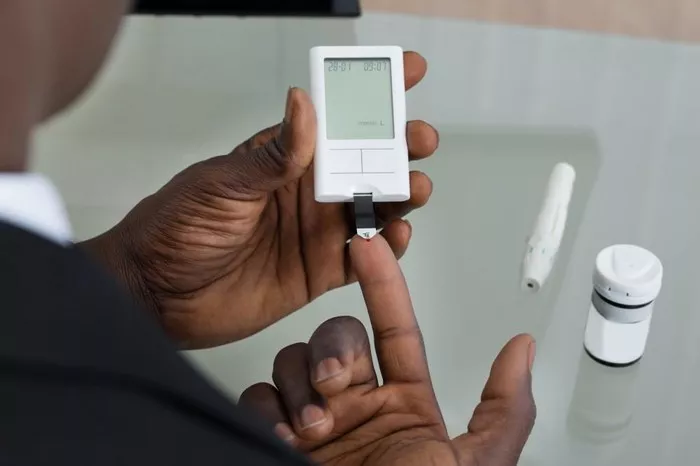Blood glucose monitoring is an essential aspect of managing diabetes and understanding one’s metabolic health. One critical component of this monitoring is assessing glucose levels at specific intervals after eating, including the 1-hour postprandial (after meal) glucose level. This article will explore what constitutes a normal 1-hour glucose level, the factors that influence these levels, and the implications for health management.
Understanding Blood Glucose Levels
What Is Blood Glucose?
Blood glucose, or blood sugar, refers to the amount of glucose present in the bloodstream. Glucose is a primary source of energy for the body’s cells and comes from the foods we consume, particularly carbohydrates. The body regulates blood glucose levels through a complex system involving insulin, a hormone produced by the pancreas, and other hormones that either raise or lower blood sugar levels.
Normal Glucose Levels
Normal blood glucose levels vary depending on the time of day, whether a person has eaten, and individual health factors. Generally, glucose levels are measured in milligrams per deciliter (mg/dL) in the United States and millimoles per liter (mmol/L) in other countries.
Fasting Blood Glucose Levels: Normal fasting blood glucose levels (measured after not eating for at least 8 hours) range from 70 to 99 mg/dL (3.9 to 5.5 mmol/L).
1-Hour Postprandial Glucose Levels: Normal glucose levels one hour after a meal should ideally be below 180 mg/dL (10.0 mmol/L).
Why Monitor 1-Hour Glucose Levels?
Monitoring glucose levels one hour after meals can provide valuable insights into how effectively the body processes carbohydrates. High postprandial glucose levels can indicate insulin resistance or impaired glucose tolerance, both of which are risk factors for developing Type 2 diabetes.
Normal 1-Hour Glucose Level Ranges
Understanding the 1-Hour Postprandial Glucose Level
The 1-hour postprandial glucose level measures how much glucose is in the blood after a meal. This test is essential for:
Identifying Insulin Response: It helps assess how well the body responds to the insulin released after eating.
Detecting Diabetes or Prediabetes: Higher-than-normal levels can indicate prediabetes or diabetes, prompting further testing.
Normal Glucose Levels at 1 Hour Post Meal
Normal Range: A normal 1-hour postprandial glucose level is generally below 180 mg/dL (10.0 mmol/L).
Prediabetes Indicator: Levels between 180 mg/dL and 200 mg/dL (10.0-11.1 mmol/L) may suggest prediabetes, warranting further testing and monitoring.
Diabetes Indicator: A 1-hour glucose level of 200 mg/dL or higher indicates potential diabetes and usually requires confirmation through further testing.
Factors Influencing 1-Hour Glucose Levels
Various factors can influence blood glucose levels after a meal:
1. Type of Food Consumed
Carbohydrate Content: Foods high in carbohydrates, especially simple sugars, can cause a significant spike in blood glucose levels. For instance, eating sugary desserts or refined grains may lead to higher postprandial glucose compared to whole grains or fibrous vegetables.
Fiber Intake: Foods high in fiber can slow the absorption of glucose, resulting in lower post-meal blood sugar spikes.
Protein and Fat: Meals rich in protein and healthy fats may have a milder effect on blood sugar levels compared to carbohydrate-heavy meals.
2. Meal Size
The size of the meal also plays a crucial role in determining blood glucose levels. Larger meals typically result in higher postprandial glucose levels, while smaller, balanced meals can help maintain stable blood sugar.
3. Timing of Meals
The timing of meals, including the interval between eating and testing blood glucose, affects the readings. For the 1-hour test, it is crucial to measure glucose exactly one hour after the first bite of food.
4. Physical Activity
Exercise can influence blood glucose levels. Engaging in physical activity can help lower blood sugar levels by increasing insulin sensitivity and promoting glucose uptake by muscles. Conversely, lack of activity can lead to elevated glucose levels after meals.
5. Stress Levels
Stress hormones, such as cortisol and adrenaline, can cause blood glucose levels to rise. Chronic stress may lead to consistently elevated postprandial glucose readings.
6. Medications
Certain medications, including corticosteroids and some diuretics, can affect blood glucose levels. Individuals taking such medications should consult their healthcare provider to understand their potential impact on glucose monitoring.
How to Measure 1-Hour Glucose Levels
Using a Glucometer
To measure postprandial glucose levels:
Prepare the Glucometer: Ensure the glucometer is clean and functioning properly.
Wash Your Hands: Clean your hands with soap and water to avoid contamination of the blood sample.
Prick Your Finger: Use a lancet to prick the side of your fingertip to obtain a drop of blood.
Apply the Blood Sample: Place the blood drop onto the test strip inserted into the glucometer.
Record the Reading: After a few seconds, the glucometer will display your blood glucose level.
When to Measure
Timing: To obtain a 1-hour postprandial reading, measure your blood glucose exactly one hour after finishing a meal.
Frequency: Individuals with diabetes may need to monitor their postprandial glucose levels regularly, while those without diabetes may check occasionally or during specific dietary changes.
Understanding Abnormal 1-Hour Glucose Levels
1. Elevated 1-Hour Glucose Levels
A 1-hour postprandial glucose level above 180 mg/dL can indicate:
Impaired Glucose Tolerance (IGT): This condition signifies that the body does not efficiently handle glucose after meals.
Insulin Resistance: Elevated glucose levels may suggest that the body’s cells are not responding adequately to insulin.
2. Diagnostic Criteria for Prediabetes and Diabetes
Prediabetes: A 1-hour glucose level between 180 and 200 mg/dL may indicate prediabetes, which is a critical phase where individuals are at risk for developing Type 2 diabetes.
Diabetes: A 1-hour glucose level of 200 mg/dL or higher suggests diabetes. This level typically requires further confirmation through additional testing, such as a fasting blood glucose test or an A1C test.
The Importance of Managing Blood Glucose Levels
Maintaining healthy blood glucose levels is vital for overall health, especially for individuals at risk for or diagnosed with diabetes. Elevated blood glucose levels can lead to various health complications, including:
1. Cardiovascular Disease
Chronic high blood sugar levels can damage blood vessels and nerves that control the heart, increasing the risk of heart disease and stroke.
2. Neuropathy
High glucose levels can lead to nerve damage (neuropathy), causing pain, tingling, or loss of sensation in the extremities.
3. Kidney Damage
Diabetes is a leading cause of chronic kidney disease. High blood sugar levels can damage the kidneys’ filtering system, leading to kidney failure.
4. Vision Problems
Elevated blood sugar levels can cause diabetic retinopathy, a condition that damages the blood vessels in the retina, leading to vision loss.
5. Foot Problems
Nerve damage and reduced blood flow can increase the risk of foot ulcers and infections, potentially leading to amputations in severe cases.
Strategies for Maintaining Normal 1-Hour Glucose Levels
1. Dietary Choices
Balanced Meals: Aim for meals that combine complex carbohydrates, proteins, and healthy fats. This combination can help stabilize blood sugar levels.
Portion Control: Pay attention to portion sizes to avoid excessive calorie intake and subsequent blood sugar spikes.
2. Regular Physical Activity
Incorporate Exercise: Regular physical activity, such as walking, cycling, or swimming, can help maintain healthy blood glucose levels.
Strength Training: Including strength training exercises at least twice a week can enhance muscle mass and improve glucose metabolism.
3. Stress Management
Mindfulness and Relaxation: Practice stress management techniques, such as meditation, yoga, or deep-breathing exercises, to help reduce the impact of stress on blood glucose levels.
4. Medication Adherence
Follow Prescribed Treatment: If diagnosed with diabetes, take medications as prescribed by your healthcare provider to help control blood sugar levels.
5. Regular Monitoring
Frequent Testing: Regular blood glucose monitoring allows individuals to track their levels and identify patterns, making it easier to manage their condition effectively.
Conclusion
Understanding what constitutes a normal 1-hour glucose level is crucial for managing blood sugar and preventing complications related to diabetes. A normal 1-hour postprandial glucose level is generally below 180 mg/dL, while levels between 180 mg/dL and 200 mg/dL indicate potential prediabetes.
Monitoring glucose levels can provide valuable insights into how the body responds to meals, helping to identify insulin resistance or impaired glucose tolerance. Several factors can influence postprandial glucose levels, including the type and size of meals, physical activity, and stress levels.
Maintaining healthy blood glucose levels through dietary choices, regular physical activity, and adherence to prescribed medications is vital for overall health. By staying informed and actively managing their blood sugar, individuals can significantly reduce their risk of developing diabetes-related complications and improve their quality of life.
Related topics:
How to Use a Sugar Test Machine at Home



























